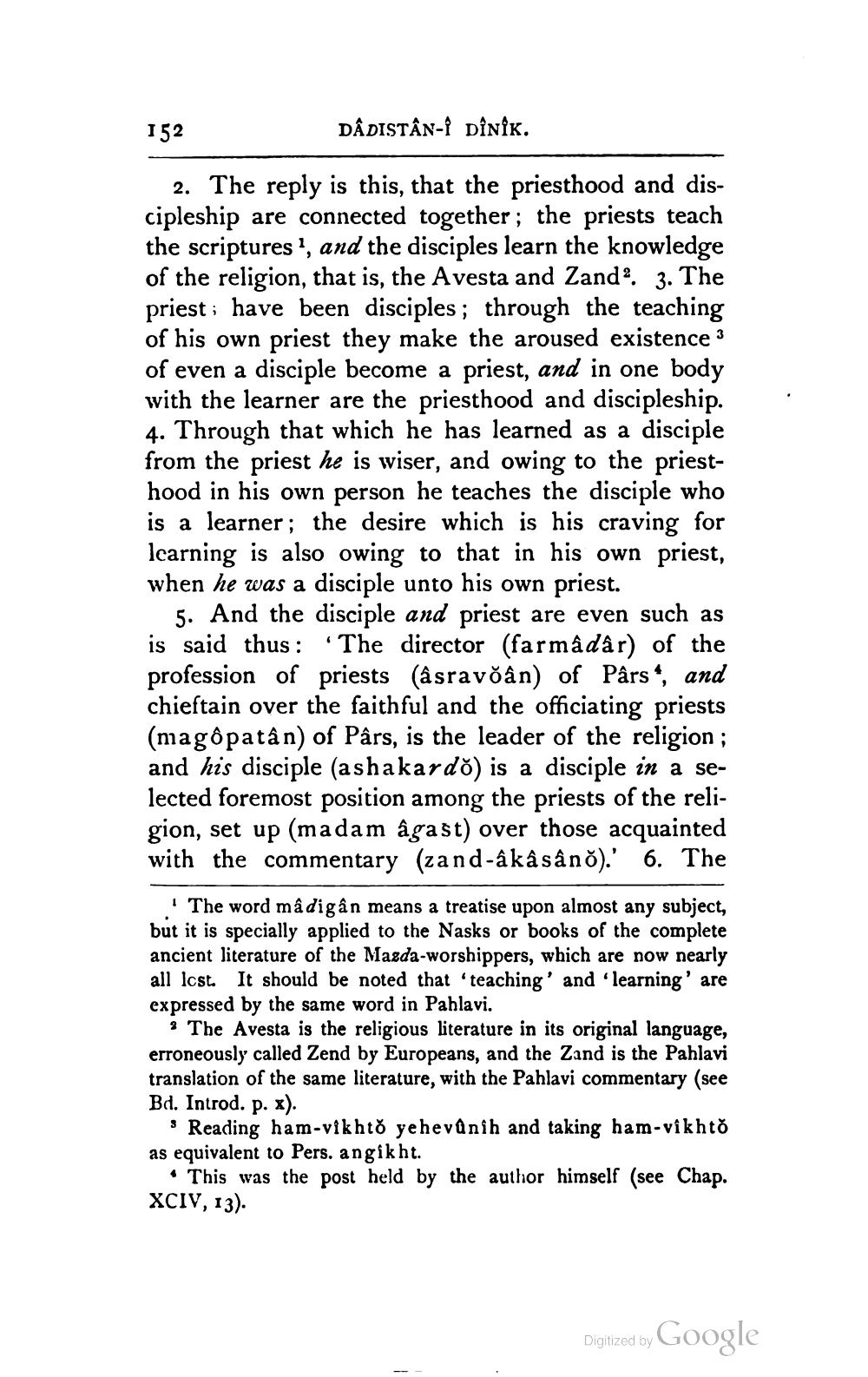________________
152
DÂDISTÂN-Î DÎNIK.
2. The reply is this, that the priesthood and discipleship are connected together; the priests teach the scriptures', and the disciples learn the knowledge of the religion, that is, the Avesta and Zand?. 3. The priest; have been disciples; through the teaching of his own priest they make the aroused existence 3 of even a disciple become a priest, and in one body with the learner are the priesthood and discipleship. 4. Through that which he has learned as a disciple from the priest he is wiser, and owing to the priesthood in his own person he teaches the disciple who is a learner; the desire which is his craving for learning is also owing to that in his own priest, when he was a disciple unto his own priest.
5. And the disciple and priest are even such as is said thus : 'The director (farmâdâr) of the profession of priests (asravõân) of Pârs", and chieftain over the faithful and the officiating priests (magôpatân) of Pârs, is the leader of the religion ; and his disciple (ashakardo) is a disciple in a selected foremost position among the priests of the religion, set up (madam âgast) over those acquainted with the commentary (zand-âkâsâno).' 6. The
The word mâdigân means a treatise upon almost any subject, but it is specially applied to the Nasks or books of the complete ancient literature of the Mazda-worshippers, which are now nearly all lcst. It should be noted that 'teaching' and learning' are expressed by the same word in Pahlavi.
3 The Avesta is the religious literature in its original language, erroneously called Zend by Europeans, and the Zand is the Pahlavi translation of the same literature, with the Pahlavi commentary (see Bd. Introd. p. x).
: Reading ham-vikhto ye hevânih and taking ham-vîkhto as equivalent to Pers. angikht.
• This was the post held by the author himself (see Chap. XCIV, 13).
Digitized by Google




